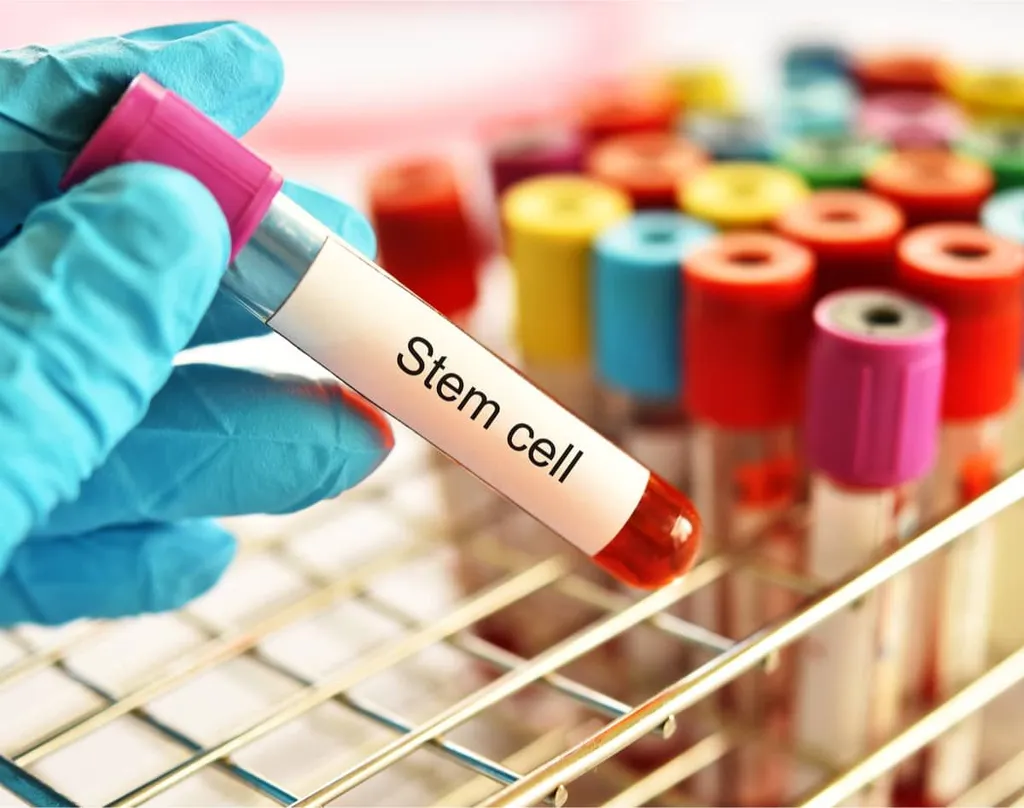ASH 2023: FLT3 Inhibitors Gilteritinib and Quizartinib as AML Maintenance Therapies

AML specialist Dr. Pinkal Desai from Weill Cornell Medical College shared information with HealthTree at the recent ASH 2023 conference about new maintenance therapies being used in AML treatment. Watch her interview, or read the summary of her interview below.
Dr. Desai stated that one of the key topics currently being discussed by the AML specialist community is the role of FLT3 Inhibitors in AML maintenance therapy. Below we will discuss what is a FLT3 inhibitor, what is AML maintenance therapy, and in what context would an AML patient receive the medicines mentioned during Dr. Desai’s interview.
What is a FLT3 Inhibitor?
A FLT3 inhibitor is a type of targeted therapy used to treat AML patients whose cancer cells have a mutation in the FLT3 gene. This gene plays an important role in the growth and division of cells, and when mutated, it can lead to the rapid growth of abnormal cells. FLT3 inhibitors work by blocking the activity of the FLT3 protein, thereby slowing down or stopping the uncontrolled growth of leukemia cells.
The FLT3 inhibitors Dr. Desai discussed were gilteritinib (Xospata) and quizartinib (Vanflyta).
What is AML Maintenance Therapy?
Maintenance therapy for AML refers to ongoing treatment that is administered after the first, more intensive therapy, with the goal of sustaining remission. This phase of treatment typically involves lower doses of medication and is designed to eliminate any remaining leukemia cells that might not be detectable but could cause a relapse if not addressed. The aim of maintenance therapy is to prolong the period of remission, improve quality of life, and extend survival by keeping the disease under control with minimal side effects. The specifics of maintenance therapy, including the type of drugs and duration, are tailored to each patient's individual condition and response to previous treatments.
When Do You Use Gilteritinib in AML Maintenance Therapy?
Dr. Desai mentioned that data from the MORPHO trial proved that AML patients who test positive for the FLT3 mutation using a highly sensitive test called minimal residual disease (MRD) testing either right before or right after stem cell transplant, are the patients that benefit from receiving the FLT3 inhibitor gilteritinib as a maintenance therapy.
AML patients who are negative for the FLT3 mutation after testing do not need gilteritinib maintenance therapy.
When Do You Use Quizartinib in AML Maintenance Therapy?
The QuANTUM-First study showed that in AML patients with the FLT3 mutation who receive quizartinib alongside chemotherapy and then go on to transplant or don’t go to transplant, quizartinib should be given as a maintenance therapy.
Dr. Desai highlighted that more data regarding these medicines will come as AML specialists conduct more research.
Understanding how these medicines are being used in AML treatment can help patients with the FLT3 mutation better advocate for themselves to ensure they are receiving the care they need.
Interested in Accelerating Research? Join HealthTree Cure Hub!
Are you interested in accelerating research toward a cure for AML? We have created a powerful patient data portal named HealthTree Cure Hub for this very purpose. We invite you to join the 12,000-and-counting blood cancer patients who are collaborating with specialists through research surveys and studies in HealthTree Cure Hub. YOU are the key to improving AML care. We are grateful for your time and support in helping us progress toward an AML cure. Create your free HealthTree Cure Hub account by visiting the link below!
CREATE MY HEALTHTREE CURE HUB ACCOUNT
AML specialist Dr. Pinkal Desai from Weill Cornell Medical College shared information with HealthTree at the recent ASH 2023 conference about new maintenance therapies being used in AML treatment. Watch her interview, or read the summary of her interview below.
Dr. Desai stated that one of the key topics currently being discussed by the AML specialist community is the role of FLT3 Inhibitors in AML maintenance therapy. Below we will discuss what is a FLT3 inhibitor, what is AML maintenance therapy, and in what context would an AML patient receive the medicines mentioned during Dr. Desai’s interview.
What is a FLT3 Inhibitor?
A FLT3 inhibitor is a type of targeted therapy used to treat AML patients whose cancer cells have a mutation in the FLT3 gene. This gene plays an important role in the growth and division of cells, and when mutated, it can lead to the rapid growth of abnormal cells. FLT3 inhibitors work by blocking the activity of the FLT3 protein, thereby slowing down or stopping the uncontrolled growth of leukemia cells.
The FLT3 inhibitors Dr. Desai discussed were gilteritinib (Xospata) and quizartinib (Vanflyta).
What is AML Maintenance Therapy?
Maintenance therapy for AML refers to ongoing treatment that is administered after the first, more intensive therapy, with the goal of sustaining remission. This phase of treatment typically involves lower doses of medication and is designed to eliminate any remaining leukemia cells that might not be detectable but could cause a relapse if not addressed. The aim of maintenance therapy is to prolong the period of remission, improve quality of life, and extend survival by keeping the disease under control with minimal side effects. The specifics of maintenance therapy, including the type of drugs and duration, are tailored to each patient's individual condition and response to previous treatments.
When Do You Use Gilteritinib in AML Maintenance Therapy?
Dr. Desai mentioned that data from the MORPHO trial proved that AML patients who test positive for the FLT3 mutation using a highly sensitive test called minimal residual disease (MRD) testing either right before or right after stem cell transplant, are the patients that benefit from receiving the FLT3 inhibitor gilteritinib as a maintenance therapy.
AML patients who are negative for the FLT3 mutation after testing do not need gilteritinib maintenance therapy.
When Do You Use Quizartinib in AML Maintenance Therapy?
The QuANTUM-First study showed that in AML patients with the FLT3 mutation who receive quizartinib alongside chemotherapy and then go on to transplant or don’t go to transplant, quizartinib should be given as a maintenance therapy.
Dr. Desai highlighted that more data regarding these medicines will come as AML specialists conduct more research.
Understanding how these medicines are being used in AML treatment can help patients with the FLT3 mutation better advocate for themselves to ensure they are receiving the care they need.
Interested in Accelerating Research? Join HealthTree Cure Hub!
Are you interested in accelerating research toward a cure for AML? We have created a powerful patient data portal named HealthTree Cure Hub for this very purpose. We invite you to join the 12,000-and-counting blood cancer patients who are collaborating with specialists through research surveys and studies in HealthTree Cure Hub. YOU are the key to improving AML care. We are grateful for your time and support in helping us progress toward an AML cure. Create your free HealthTree Cure Hub account by visiting the link below!

about the author
Katie Braswell
Katie joined HealthTree as the Community Director for AML in 2021 and became HealthTree's Director of Education in 2023. Katie is a registered dietitian who is passionate about health literacy and patient empowerment. She loves to cook, travel and spend time with her newborn son, husband and dog.
More on Conferences
Trending Articles

Get the Latest Acute Myeloid Leukemia Updates, Delivered to You.
By subscribing to the HealthTree newsletter, you'll receive the latest research, treatment updates, and expert insights to help you navigate your health.
Together we care.
Together we cure.
3x Faster.












